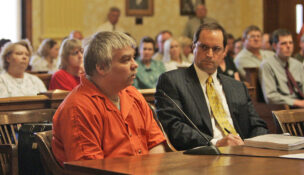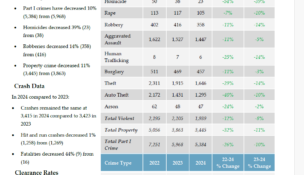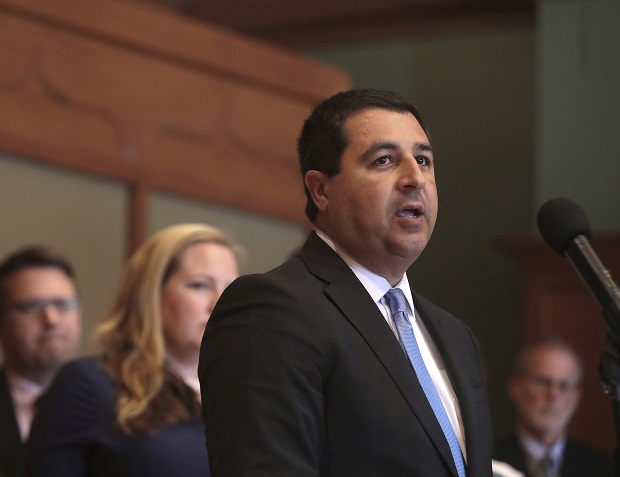State justices to consider improper jury instructions
By: WISCONSIN LAW JOURNAL STAFF//June 21, 2012//
State justices to consider improper jury instructions
By: WISCONSIN LAW JOURNAL STAFF//June 21, 2012//
Defendant argues his due process rights were violated
In State v. Courtney C. Beamon, which is at the briefing stage before the Wisconsin Supreme Court, a convicted felon caught driving from the scene of a shooting is challenging whether the sufficiency of evidence presented against him should be measured by the actual language in erroneous jury instructions or by the statutory elements of the crime.
The defendant, Courtney C. Beamon, was charged as a habitual offender and convicted of eight criminal counts stemming from a shooting Nov. 19, 2007. His appeal was based on one of those counts: fleeing or eluding an officer.
Of the total 21-year sentence handed down by the judge after a jury trial, the actual sentence for fleeing or eluding an officer was two years initial confinement and two years extended supervision.
The case facts are as follows:
Two off-duty police officers working security at an American Legion Bar in Racine heard gunshots fired and notified their dispatcher. Soon after, they saw a black male leave a porch and drive away with his vehicle lights turned off. A nearby squad car followed the suspect vehicle, which failed to slow even after the squad car lights and sirens were activated.
The suspect vehicle ran a stop sign, and Beamon jumped out of the car and tumbled into the intersection, leaving the driverless car to roll down the street and hit a parked car.
IN BRIEF
Case: State v. Courtney C. Beamon
Circuit Court Case Number: 2007 CF 1499
Appeal Number: 010 AP 2003-CR
Beamon’s initial appeal in part focused on the fact that jury instructions required the jury consider an additional element to the crime — increasing the speed of the vehicle — that the defendant alleges was not proven.
Wisconsin Stat. Sec. 346.04, entitled “Obedience to traffic officers, signs and signals; fleeing from officer” further states, in relevant part: “No operator of a vehicle, after having received a visual or audible signal from a traffic officer or a marked police vehicle shall knowingly flee or attempt to elude any traffic officer by willful or wanton disregard of such signal so as to interfere with or endanger the operation of the police vehicle, or the traffic officer or other vehicles or pedestrians, nor shall the operator increase the speed of the operator’s vehicle or extinguish the lights of the vehicle in an attempt to elude or flee.”
The jury instruction submitted by the state specified that to find Beamon guilty, the following two elements must be proven: “First, the defendant operated a motor vehicle on a highway after receiving a visual and audible signal from a marked police vehicle. Secondly, the defendant knowingly fled a marked squad car by willful disregard of the visual and audible signal so as to interfere with or endanger the traffic officer by increasing the speed of the vehicle to flee.”
Beamon urged the Wisconsin Court of Appeals to look to the Wisconsin Supreme Court’s 2008 decision in D.L. Anderson’s Lakeside Leisure Co. v. Anderson, 2008 WI 126, for the proposition that a challenge to the sufficiency of evidence should be evaluated in light of the jury instructions. Additionally, Beamon contended that a 1997 state Supreme Court case, State v. Wulff, 207 Wis. 2d 143, 153, limited the ability of reviewing courts to affirm a conviction unless “there was sufficient evidence to support guilt on the charge submitted to the jury.”
In affirming Beamon’s conviction, the appellate court acknowledged there was no evidence showing the car speed increased, a point conceded by the state.
However, given what it considered to be the “overwhelming evidence” supporting guilt presented by the state at trial, the appellate court decided the erroneous jury instruction was harmless error, and the conviction was affirmed, in part relying upon State v. Harvey, 2002 WI 93.
The appellate court acknowledged that no Wisconsin case was precisely on point, but both Harvey and applicable federal case law supported the application of the harmless error rule. They also distinguished the defendant’s reliance on Anderson, saying the case did not involve an allegedly incorrect jury instruction or a statutorily defined criminal offense.
In a brief to the Wisconsin Supreme Court, Beamon relies in part upon Fifth, Sixth and Fourteenth Amendment protections provided in the U.S. Constitution. When the state conceded there was no evidence Beamon increased his speed, and where the appellate court dealt with this issue by applying the harmless error rule, Beamon argues, his due process rights were violated.
Beamon contends that to allow the Court of Appeals to employ a harmless error analysis in this case would “substitute the judgment of the reviewing court for that of the jury and makes it, rather than the jury, the ultimate trier of fact in the case.”
The state of Wisconsin had yet to file its responsive brief at press time.
Ultimately, the Wisconsin Supreme Court’s ruling in this case could have an affect on and provide guidance to reviewing courts around the state as they deal with inconsistencies between jury instructions and statutory language for criminal and civil cases.
Legal News
- Steven Avery prosecutor Ken Kratz admits ‘mistakes were made’
- Colombian national extradited to Milwaukee faces International narcotics-trafficking conspiracy charge
- MPD: Milwaukee homicides down nearly 40 percent compared to last year
- EVERS: Republican lawmakers No-Show at special meeting to release statewide PFAS funding, stabilize healthcare access
- Wisconsin ICAC Task Force conference on Missing and Exploited Children highlights increase in sextortion cases
- More than 300 Wisconsin officers back in law enforcement after being fired or forced out
- Former Trump staffer who said to ‘fan the flame’ after 2020 loss hired to lead Wisconsin GOP
- Gov. Evers appoints David Casey to Serve as DOR Secretary
- Former Marine sentenced for Molotov Cocktail attack against Planned Parenthood Clinic
- ABA names 34th Annual Margaret Brent Women Lawyers of Achievement Awards honorees
- FBI launches criminal investigation into Key Bridge collapse
- Man charged in slaying after woman’s leg found at Milwaukee-area park
WLJ People
- Power 30 Personal Injury Attorneys – Russell Nicolet
- Power 30 Personal Injury Attorneys – Benjamin Nicolet
- Power 30 Personal Injury Attorneys – Dustin T. Woehl
- Power 30 Personal Injury Attorneys – Katherine Metzger
- Power 30 Personal Injury Attorneys – Joseph Ryan
- Power 30 Personal Injury Attorneys – James M. Ryan
- Power 30 Personal Injury Attorneys – Dana Wachs
- Power 30 Personal Injury Attorneys – Mark L. Thomsen
- Power 30 Personal Injury Attorneys – Matthew Lein
- Power 30 Personal Injury Attorneys – Jeffrey A. Pitman
- Power 30 Personal Injury Attorneys – William Pemberton
- Power 30 Personal Injury Attorneys – Howard S. Sicula











